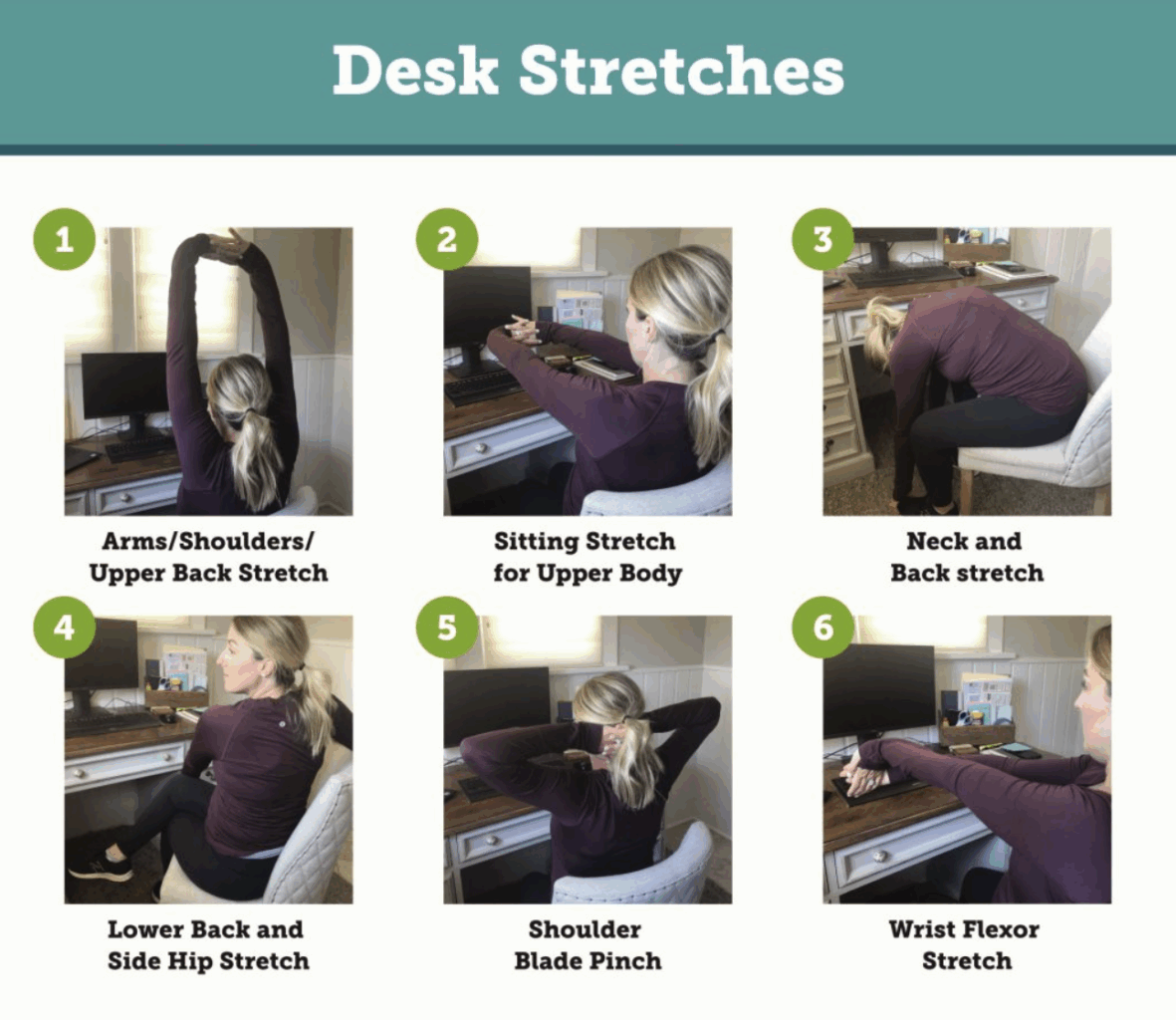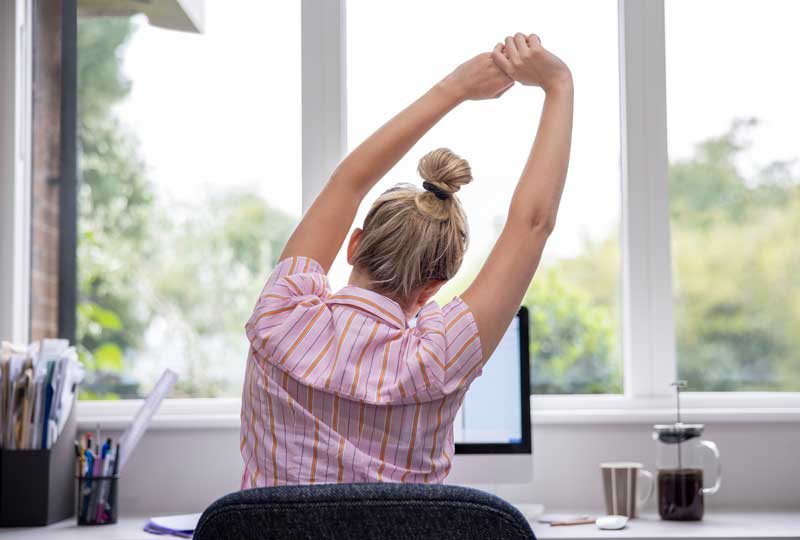Complete these daily desk stretches to soothe back, neck and shoulder pain and prevent future flare-ups.
Sometimes desk work can be a literal pain in the neck. Likewise, sitting hunched in front of a computer screen for hours can do a number on your back. Thankfully, incorporating movement breaks into your daily routine can be a simple and effective way to keep you feeling your best.
The American College of Sports Medicine recommends that adults perform stretching exercises at least two to three days a week — preferably daily — to help improve range of motion and to make everyday tasks easier. The Centers for Disease Control (CDC) recommends adults get a minimum of 150 minutes of moderate activity per week. That breaks down to 30 minutes a day, five days a week, and the CDC offers many tips for incorporating movement into your workday as part of its “move more and sit less” motto.
Stretch breaks: Part of a healthy lifestyle
Dr. David Kennedy, a physiatrist with the Vanderbilt Spine Center, said desk stretch breaks can be a great way to meet your physical activity goals while relieving aches and pains that can gather in your back, neck and shoulders from desk work.
“Stretching can help reduce the discomfort caused by sitting at a desk for long periods of time,” Kennedy said. “Desk stretches for home or the workplace can be done regularly, throughout the day, about every 30 minutes. In addition, it is helpful to take time to get up and walk around regularly.”
Movement breaks improve focus, concentration
If you feel guilty for taking stretch breaks during the workday and worry that you won’t be as productive, rest assured that research shows that movement actually improves focus and concentration. The American Optometric Association even recommends breaks from the computer screen to protect your eye health and prevent strain.
“While taking stretch breaks can feel indulgent, it really isn’t,” Kennedy said. “Consider breaks instead as necessary maintenance for your body and mind to function at their best.”
Recommended desk stretches
Here are some simple desk stretches to try:
- Arms/shoulders/upper back stretch: Interlace your fingers and raise your arms above your head with your palms facing up. To feel the stretch, try to push your arms up and back. You should feel this stretch in your arms, shoulders and upper back. Hold for 15 seconds. Try to breathe deeply. Do not hold your breath.
- Sitting stretch for upper body: Sit upright in your chair and straighten your arms out in front of you with your fingers laced. You should feel this stretch in your arms and your upper back. Hold stretch for 20 seconds. Do the stretch at least twice.
- Neck and back stretch: While seated, lay your torso over your lap, fully relaxing your back and neck. Let your arms hang limp while breathing deeply. Hold for 15 seconds.
- Lower back and side hip stretch: In a sitting position, cross your left leg over the outside of your right knee. Turn your shoulders to your left using your right hand to push against your left knee while your left hand pushes against the back of your chair. Exhale slowly and turn your head to look over your left shoulder. Hold for 10-15 seconds. Do both sides.
- Shoulder blade pinch: Sit up straight in your chair and relax your shoulders. Place your hands behind your head, interlace your fingers and pull your shoulder blades together. Hold for 4-5 seconds. You should feel this stretch in your shoulders, upper back and even a little in the pectoral (chest) muscles as your chest moves upwards when you work to squeeze your shoulder blades together. Repeat 3-4 times.
- Wrist flexor stretch: While holding the arm straight, gently push fingers and thumb toward the forearm. Hold for 15 seconds and switch hands.
Consider ergonomics
If you incorporate movement and stretching breaks but continue to experience pain, Kennedy recommends assessing the ergonomics of your workspace.
“A properly arranged workspace will set you up with the right posture and support,” Kennedy said. “This, combined with frequent breaks, can really make the difference for your long-term physical health.”


Relief from pain
If you are dealing with an injury, facing surgery or coping with chronic pain, Vanderbilt Orthopaedics offers a full spectrum of care. Our specialists work with you from evaluation and “prehab” through physical therapy and, if needed, surgery. We’ll help you get back to doing the things you love, pain-free. To make an appointment, call 615-936-7846.




